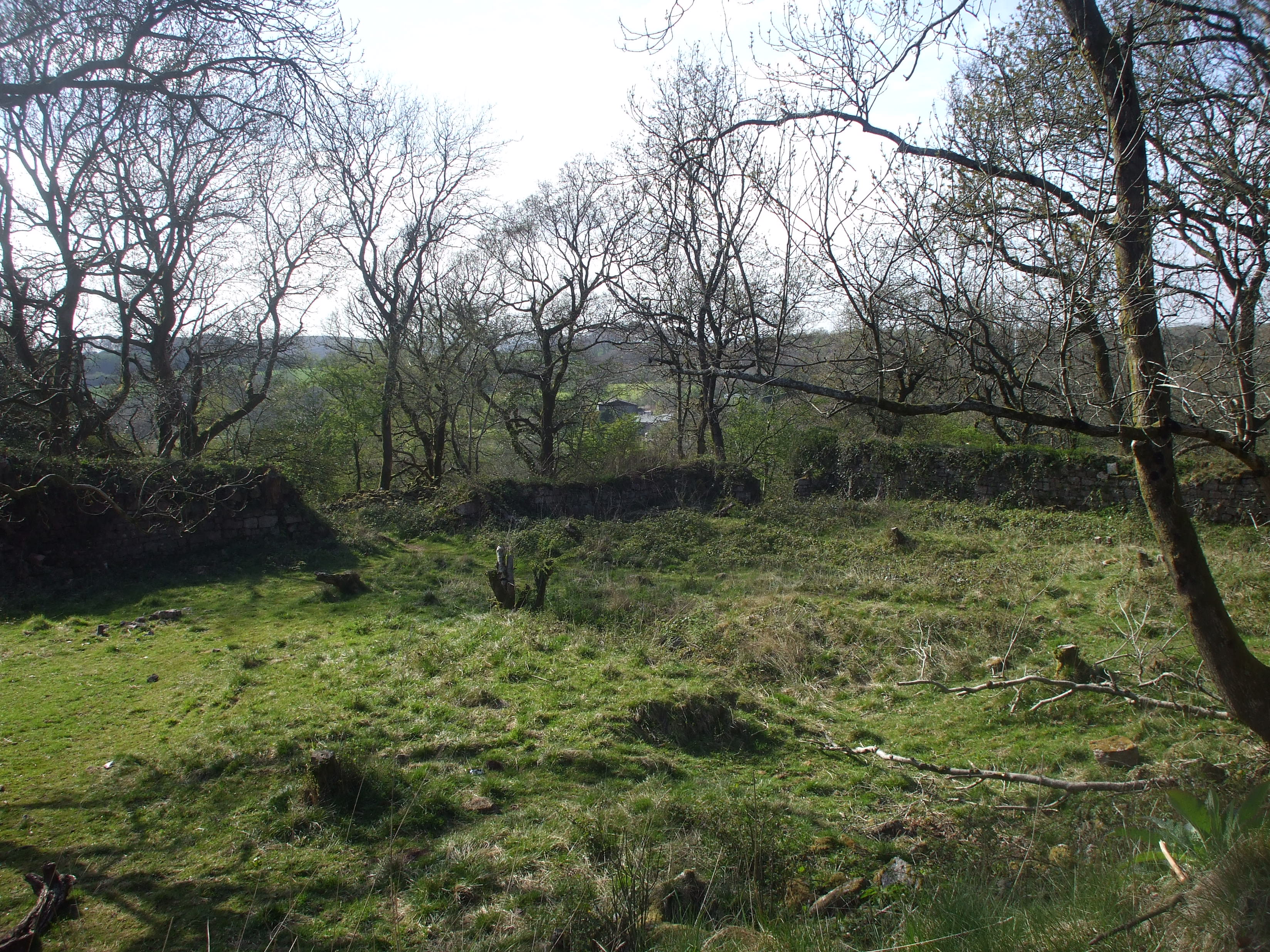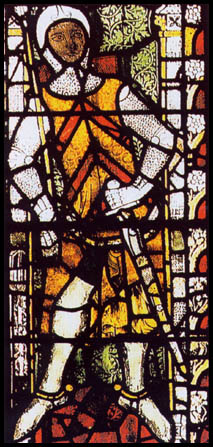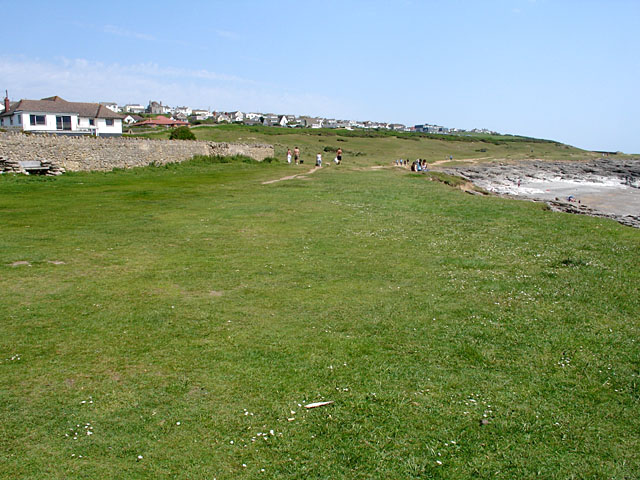|
Morgraig Castle
Morgraig Castle ( cy, Castell Morgraig) is a ruined castle, which lies close to the southern borders of the county borough of Caerphilly, overlooking Cardiff in Wales. It was built in the 13th century, but there is some debate as to who actually built the castle, either Gilbert de Clare or the Lord of Senghennydd. The castle appears to have never been occupied or completed. It is now a scheduled monument and a Grade II listed building. Archaeological investigations and interpretations Morgraig Castle is located in Caerphilly, on the escarpment of Craig Llanishen, close to the border between the counties of Caerphilly and Cardiff. It was built after 1243, but before 1267. The castle was first discovered by a group of archaeologists from the Cardiff Museum led by John Ward in the summer of 1895. Ward was aware of stories telling of an ancient British fort and was interested in the particular site because he had seen maps that showed an unusual rectangular shape. Ward oversaw ex ... [...More Info...] [...Related Items...] OR: [Wikipedia] [Google] [Baidu] |
Caerphilly
Caerphilly (, ; cy, Caerffili, ) is a town and community in Wales. It is situated at the southern end of the Rhymney Valley. It is north of Cardiff and northwest of Newport. It is the largest town in Caerphilly County Borough, and lies within the historic borders of Glamorgan, on the border with Monmouthshire. At the 2011 Census, the town had a population of 41,402 while the wider Caerphilly Local Authority area has a population of 178,806. Toponym The name of the town in Welsh, , means "the fort () of Ffili". Despite lack of evidence, tradition states that a monastery was built by St Cenydd, a sixth-century Christian hermit from the Gower Peninsula, in the area. The Welsh cantref in the medieval period was known as Senghenydd. It is said that St Cenydd's son, St Ffili, built a fort in the area thus giving the town its name. Another explanation given for the toponym is that the town was named after the Anglo-Norman Marcher Lord, Philip de Braose. History The town's sit ... [...More Info...] [...Related Items...] OR: [Wikipedia] [Google] [Baidu] |
Royal Commission On The Ancient And Historical Monuments Of Wales
The Royal Commission on the Ancient and Historical Monuments of Wales (RCAHMW; cy, Comisiwn Brenhinol Henebion Cymru; ), established in 1908, is a Welsh Government sponsored body concerned with some aspects of the archaeological, architectural and historic environment of Wales. It is based in Aberystwyth. The RCAHMW maintains and curates the National Monuments Record of Wales (NMRW), an archive with an online platform called Coflein. Professor Nancy Edwards is Chair of the Commissioners. Mission statement The Royal Commission has a national role in the management of the archaeological, built and maritime heritage of Wales, as an originator, curator and supplier of information for individual, corporate and governmental decision-makers, researchers and the general public. To this end it: * Surveys, interprets and records the man-made environment of Wales * Compiles, maintains and curates the National Monuments Record of Wales * Promotes an understanding of this information by ... [...More Info...] [...Related Items...] OR: [Wikipedia] [Google] [Baidu] |
Llangynwyd
Llangynwyd is a village (and electoral ward) 2 miles to the south of Maesteg, in the county borough of Bridgend, Wales. It was part of the medieval commote (Welsh: ''cwmwd'') of Tir Iarll. History and amenities The village is the site of Llangynwyd parish church, the ruins of Llangynwyd Castle and one of the oldest pubs in Wales (the ''Old House'', dating from 1147.) The place name Llangynwyd refers to the hilltop village with a church dedicated to St Cynwyd, son of Cynfelyn. The church was founded by St Cynwyd in the 6th century. All that remains of the original structure is the stone socket of a wooden cross, which can be seen in the wall above the entrance. The church was rebuilt in the 13th century and has since been restored several times. The square tower dates from the 15th century and was completely restored in 1893. The church has the biggest private cemetery in Europe. The old village of Llangynwyd, "Top Llan", was the home of the legendary Maid of Cefn Ydfa, feature ... [...More Info...] [...Related Items...] OR: [Wikipedia] [Google] [Baidu] |
Llywelyn Ap Gruffudd
Llywelyn ap Gruffudd (c. 1223 – 11 December 1282), sometimes written as Llywelyn ap Gruffydd, also known as Llywelyn the Last ( cy, Llywelyn Ein Llyw Olaf, lit=Llywelyn, Our Last Leader), was the native Prince of Wales ( la, Princeps Walliae, links=no; cy, Tywysog Cymru, links=no) from 1258 until his death at Cilmeri in 1282. Llywelyn was the son of Gruffydd ap Llywelyn Fawr and grandson of Llywelyn the Great, and he was one of the last native and independent princes of Wales before its conquest by Edward I of England and English rule in Wales that followed, until Owain Glyndŵr held the title during the Welsh Revolt of 1400–1415. Genealogy and early life Llywelyn was the second of the four sons of Gruffydd, the eldest son of Llywelyn the Great, and Senana ferch Caradog, the daughter of Caradoc ap Thomas ap Rhodri, Lord of Anglesey. The eldest was Owain Goch ap Gruffydd and Llywelyn had two younger brothers, Dafydd ap Gruffydd and Rhodri ap Gruffydd. Llywelyn is ... [...More Info...] [...Related Items...] OR: [Wikipedia] [Google] [Baidu] |
Henry III Of England
Henry III (1 October 1207 – 16 November 1272), also known as Henry of Winchester, was King of England, Lord of Ireland, and Duke of Aquitaine from 1216 until his death in 1272. The son of King John and Isabella of Angoulême, Henry assumed the throne when he was only nine in the middle of the First Barons' War. Cardinal Guala Bicchieri declared the war against the rebel barons to be a religious crusade and Henry's forces, led by William Marshal, defeated the rebels at the battles of Lincoln and Sandwich in 1217. Henry promised to abide by the Great Charter of 1225, a later version of the 1215 '' Magna Carta'', which limited royal power and protected the rights of the major barons. His early rule was dominated first by Hubert de Burgh and then Peter des Roches, who re-established royal authority after the war. In 1230, the King attempted to reconquer the provinces of France that had once belonged to his father, but the invasion was a debacle. A revolt led by William ... [...More Info...] [...Related Items...] OR: [Wikipedia] [Google] [Baidu] |
Simon De Montfort, 6th Earl Of Leicester
Simon de Montfort, 6th Earl of Leicester ( – 4 August 1265), later sometimes referred to as Simon V de Montfort to distinguish him from his namesake relatives, was a nobleman of French origin and a member of the English peerage, who led the baronial opposition to the rule of King Henry III of England, culminating in the Second Barons' War. Following his initial victories over royal forces, he became ''de facto'' ruler of the country, and played a major role in the constitutional development of England. During his rule, Montfort called two famous parliaments. The first stripped Henry of his unlimited authority, while the second included ordinary citizens from the towns. For this reason, Montfort is regarded today as one of the progenitors of modern parliamentary democracy. As Earl of Leicester he expelled Jews from that city; as he became ruler of England he also cancelled debts owed to Jews through violent seizures of records. Montfort's party massacred the Jews of London, ... [...More Info...] [...Related Items...] OR: [Wikipedia] [Google] [Baidu] |
Second Barons' War
The Second Barons' War (1264–1267) was a civil war in England between the forces of a number of barons led by Simon de Montfort against the royalist forces of King Henry III, led initially by the king himself and later by his son, the future King Edward I. The barons sought to force the king to rule with a council of barons, rather than through his favourites. The war also involved a series of massacres of Jews by de Montfort's supporters, including his sons Henry and Simon, in attacks aimed at seizing and destroying evidence of baronial debts. To bolster the initial success of his baronial regime, de Montfort sought to broaden the social foundations of parliament by extending the franchise to the commons for the first time. However, after a rule of just over a year, de Montfort was killed by forces loyal to the king at the Battle of Evesham. Causes The reign of Henry III is most remembered for the constitutional crisis in this period of civil strife, which was provoked o ... [...More Info...] [...Related Items...] OR: [Wikipedia] [Google] [Baidu] |
Keep
A keep (from the Middle English ''kype'') is a type of fortified tower built within castles during the Middle Ages by European nobility. Scholars have debated the scope of the word ''keep'', but usually consider it to refer to large towers in castles that were fortified residences, used as a refuge of last resort should the rest of the castle fall to an adversary. The first keeps were made of timber and formed a key part of the motte-and-bailey castles that emerged in Normandy and Anjou during the 10th century; the design spread to England, south Italy and Sicily. As a result of the Norman invasion of 1066, use spread into Wales during the second half of the 11th century and into Ireland in the 1170s. The Anglo-Normans and French rulers began to build stone keeps during the 10th and 11th centuries; these included Norman keeps, with a square or rectangular design, and circular shell keeps. Stone keeps carried considerable political as well as military importance and could take up ... [...More Info...] [...Related Items...] OR: [Wikipedia] [Google] [Baidu] |
Ogmore Castle
Ogmore Castle ( cy, Castell Ogwr) is a Grade I listed castle ruin located near the village of Ogmore-by-Sea, south of the town of Bridgend in Glamorgan, South Wales. It is situated on the south bank of the River Ewenny and the east bank of the River Ogmore. Its construction might have begun in 1106. Ogmore was one of three castles built in the area in the early 12th century, the others being Coity Castle and Newcastle Castle. It was in use until the 19th century for a range of purposes, including a court of justice and a prison, but is now a substantial set of remains and a local landmark. It is managed by local authorities. Etymology When John Leland wrote his ''Itinerary'', he referred to this fortress as "Ogor Castelle". The name comes from the nearby river, the River Ogmore ( cy, Afon Ogwr). History Construction of Ogmore Castle might have started around 1106, its foundation predating the Norman conquest. In Caradoc of Llancarfan's ''The historie of Cambria, now called Wa ... [...More Info...] [...Related Items...] OR: [Wikipedia] [Google] [Baidu] |
De Clare
The House of Clare was a prominent Anglo-Norman noble house that held at various times the earldoms of Pembroke, Hertford and Gloucester in England and Wales, as well as playing a prominent role in the Norman invasion of Ireland. They were descended from Richard Fitz Gilbert, Lord of Clare (1035-1090), a kinsman of William the Conqueror who accompanied him into England during the Norman conquest of England. As a reward for his service, Richard was given lands in Suffolk centred on the village of Clare. As a result, Richard and his descendants carried the name of ‘de Clare’ or ‘of Clare’. Origins The Clare family derived in the male line from Gilbert, Count of Brionne, whose father Geoffrey, Count of Eu was an illegitimate son of Richard I, Duke of Normandy by an unknown mistress. Gilbert de Brionne was one of the guardians of William II, who became Duke of Normandy as a child in 1035. When Gilbert was assassinated in 1039 or 1040, his young sons Baldwin and Rich ... [...More Info...] [...Related Items...] OR: [Wikipedia] [Google] [Baidu] |
Ogmore-by-Sea
Ogmore-by-Sea ( Welsh: ''Aberogwr'', meaning "Mouth of the River Ogmore") is a seaside village in St Brides Major community in the Vale of Glamorgan, Wales. It lies on the western limit of the Glamorgan Heritage Coast of south Wales. The population in 2011 was 878. History A polished flint axe-head of Seamer type was found at Ogmore Mill in 1976. Just like its counterparts in Cornwall, Ireland and Brittany, the west-facing beach and coast was notorious as a graveyard for ships during strong on-shore winds (south-westerly winds from the Atlantic). Many ships, in particular, were destroyed on Tusker Rock, a brutal reef slightly out to sea that is totally covered at high tide. There are urban legends of organised shipwrecking at Ogmore (and all across the Vale of Glamorgan coastline) like tales from Cornwall of the use of false lights so that passing ships would mistake a flickering light as a lighthouse or ship at anchor and be lured to destruction, but there is no historic ... [...More Info...] [...Related Items...] OR: [Wikipedia] [Google] [Baidu] |





